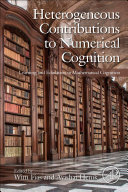Computational Design Technology Cognition and Environments 1st Edition by Rongrong Yu, Ning Gu, Michael J Ostwald ISBN 9780367203061 0367203065
$50.00 Original price was: $50.00.$25.00Current price is: $25.00.
Computational Design Technology Cognition and Environments 1st Edition by Rongrong Yu, Ning Gu, Michael J Ostwald – Ebook PDF Instant Download/Delivery: 9780367203061 ,0367203065
Full download Computational Design Technology Cognition and Environments 1st Edition after payment

Product details:
ISBN 10: 0367203065
ISBN 13: 9780367203061
Author: Rongrong Yu, Ning Gu, Michael J Ostwald
Computational Design Technology Cognition and Environments 1st Edition Table of contents:
1. Introduction
1.1. Computational design
1.2. Design technology, cognition and design environment
1.3. Summary of chapters
1.4. Context for the book
2. Emergent Technologies in Computational Design
2.1. Introduction
2.1.1. History of CAD
2.1.2. Evolution of digital modelling devices
2.1.3. Evolution of CAD software and hardware
2.2. Parametric and generative design
2.2.1. Key concepts and characteristics of generative design
2.2.2. Major generative design systems
2.2.3. Key concepts in parametric design
2.2.4. History and application of parametric design
2.3. Presence and telepresence, virtual and real worlds
2.3.1. Telepresence
2.3.2. Augmented Reality
2.3.3. Virtual Reality
2.4. Conclusion
3. Understanding Design Cognition in Computational and Generative Design
3.1. Design cognition
3.1.1. Design thinking
3.1.2. Design problems and design solutions
3.1.3. Design creativity
3.2. Formal approaches to studying design cognition
3.2.1. Protocol analysis
3.2.2. Biometric approaches to studying design cognition
3.3. Design cognition in the computational design environment
3.3.1. Computational thinking and design thinking
3.3.2. Design cognition in the computational environment
3.3.3. Design cognition in the Parametric Design Environment (PDE)
3.4. Conclusion
4. Cognitive Impacts and Computational Design Environments
4.1. Introduction
4.2. Case study 1: Designers’ behaviour in parametric and geometric design environments
4.2.1. Research design
4.2.2. Result 1: Design issues and processes
4.2.3. Result 2: Designers’ cognitive effort
4.2.4. Result 3: Design patterns
4.2.5. Result 4: Co-evolution process in parametric design
4.3. Case study 2: Cognitive studies of design collaboration in a virtual environment
4.3.1. Collaborative design studies and technologies
4.3.2. Experiments and coding scheme
4.3.3. Protocol analysis results and discussion
4.4. Case study 3: A biometric approach to analysing cognitive behaviour in a CAD environment
4.4.1. Experiment
4.4.2. Results
4.5. Case study 4: Implementing rules in design, using generative design grammars
4.5.1. Design grammars
4.5.2. The conceptual framework of generative design grammars
4.5.3. Design rules
4.5.4. Designing a virtual gallery
4.6. Case study 5.1: Generating new design instances of an existing style using computational analysis
4.6.1. Stage 1: Syntactical derivation
4.6.2. Stage 2: Parametric generation
4.6.3. Stage 3: Fractal analysis
4.7. Case study 5.2: Transparency and mystery in traditional Chinese private gardens
4.7.1. Pedestrian accessibility convex map analysis
4.7.2. Visual accessibility based isovist analysis
4.7.3. Hypothesis framing
4.7.4. Exploration of Yuyuan Garden’s transparency and mystery
4.8. Case study 6: Creativity in a parametric design environment
4.8.1. Research design
4.8.2. Analysis of results
4.9. Conclusion
5. Conclusion
5.1. A conceptual model
5.2. Looking into the future of computational design
5.2.1. Design technology: Implications and future developments
5.2.2. Design cognition: Implications and future developments
5.2.3. Design environment: Implications and future developments
5.3. Conclusion
Appendix: Coding Example for Case Study 1
Appendix of Images Sources
Index
People also search for Computational Design Technology Cognition and Environments 1st Edition:
computational rna design & delivery summit
computational designer resume
computational designer role
computational designer remote
computational designer remote jobs
Tags: Rongrong Yu, Ning Gu, Michael J Ostwald, Computational Design, Technology Cognition, Environments
You may also like…
Uncategorized
Uncategorized
Uncategorized
Technique - Electronics: Signal Processing











